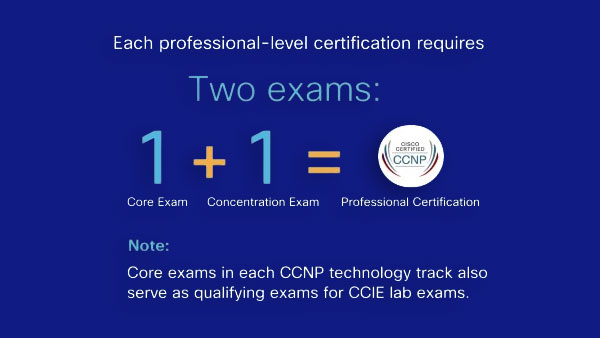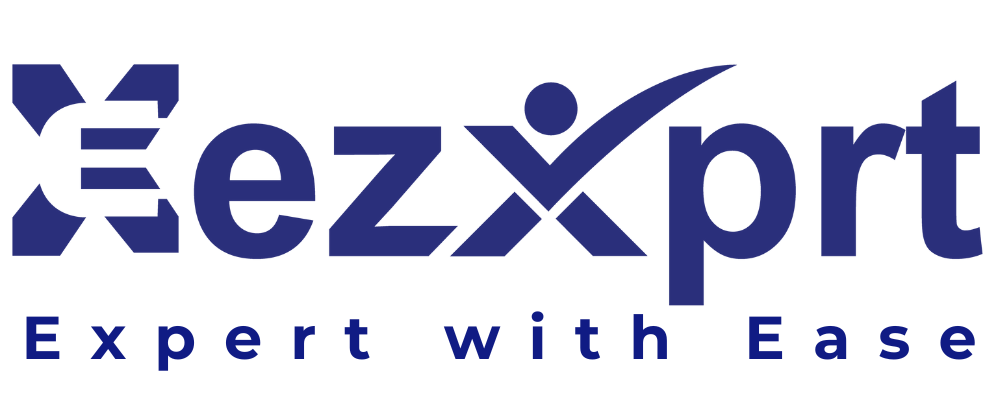CCNP Enterprise (350-401) Training
You need to obtain the CCNP Enterprise certification by passing two exams. The first exam focuses on core enterprise technologies, while the second exam enables you to specialize in a particular technical area of your choice.
About the CCNP Certification
Each professional-level certification requires only two exams one core exam and one concentration exam of your choice, so you can focus on your interests and needs. Core exams in each CCNP technology track also serve as qualifying exams for CCIE lab exams..
About the CISCO Certified Specialist
If you pass only the core exam, you also receive a specialist credential: Cisco Certified Specialist – Enterprise Core. However, this specialist credential is not the same thing as being CCNP Enterprise certified.

About the CCNP Enterprise Certified
A Cisco Certified Network Professional (CCNP) is responsible for implementing, maintaining and resolving issues relating to LAN & WAN at the enterprise level, more over they work in collaboration with specialists in areas such as advanced security, voice, wireless, and video solutions.
Core exam:
350-401 (ENCOR) Implementing and Operating Cisco Enterprise Network Core Technologies
Concentration exams (choose one):
- 300-410 ENARSI Implementing Cisco Enterprise Advanced Routing and Services
- 300-415 ENSDWI Implementing Cisco SD-WAN Solutions
- 300-420 ENSLD Designing Cisco Enterprise Networks
- 300-425 ENWLSD Designing Cisco Enterprise Wireless Networks
- 300-430 ENWLSI Implementing Cisco Enterprise Wireless Networks
- 300-435 ENAUTO Implementing Automation for Cisco Enterprise Solutions
| Full Name | CISCO Certified Network Professional |
|---|---|
| Certification Level | Professional |
| Prerequisites |
|
| Active Status | All Cisco certifications are valid for 3 years. |
| Exam Time | 120 Minutes |
| Exam Fee | approx. $400 USD |
| Where to attempt | Pearson VUE testing center |
| Main Exam Topics |
|
Fill the Form and Get Enroll
CCNP Encor Main Content
1.1 Explain the different design principles used in an enterprise network
- Enterprise network design such as Tier 2, Tier 3, and Fabric Capacity planning
- High availability techniques such as redundancy, FHRP, and SSO
1.2 Analyze design principles of a WLAN deployment
- Wireless deployment models (centralized, distributed, controller-less, controller
- based, cloud, remote branch)
- Location services in a WLAN design
1.3 Differentiate between on-premises and cloud infrastructure deployments
1.4 Explain the working principles of the Cisco SD-WAN solution
- SD-WAN control and data planes elements
- Traditional WAN and SD-WAN solutions
1.5 Explain the working principles of the Cisco SD-Access solution
- SD-Access control and data planes elements
- Traditional campus interoperating with SD-Access
1.6 Describe concepts of wired and wireless QoS
- QoS components
- QoS policy
1.7 Differentiate hardware and software switching mechanisms
- Process and CEF
- MAC address table and TCAM
- FIB vs. RIB
2.1 Describe device virtualization technologies
- Hypervisor type 1 and 2
- Virtual machine
- Virtual switching
2.2 Configure and verify data path virtualization technologies
- VRF
- GRE and IPsec tunneling
2.3 Describe network virtualization concepts
- LISP
- VXLAN
3.1 Layer 2
- Troubleshoot static and dynamic 802.1q Trunking protocols
- Troubleshoot static and dynamic EtherChannel
- Configure and verify common Spanning Tree Protocols (RSTP and MST)
3.2 Layer 3
- Compare routing concepts of EIGRP and OSPF (advanced distance vector vs. link state, load balancing, path selection, path operations, metrics)
- Configure and verify simple OSPF environments, including multiple normal areas, summarization, and filtering (neighbor adjacency, point-to-point and broadcast network types, and passive interface)
- Configure and verify eBGP between directly connected neighbors (best path selection algorithm and neighbor relationships)
3.3 Wireless
- Describe Layer 1 concepts, such as RF power, RSSI, SNR, interference noise, band and channels, and wireless client devices capabilities
- Describe AP modes and antenna types
- Describe access point discovery and join process (discovery algorithms, WLC selection process)
- Describe the main principles and use cases for Layer 2 and Layer 3 roaming
- Troubleshoot WLAN configuration and wireless client connectivity issues
3.4 IP Services
- Describe Network Time Protocol (NTP)
- Configure and verify NAT/PAT
- Configure first hop redundancy protocols, such as HSRP and VRRP
- Describe multicast protocols, such as PIM and IGMP v2/v3
4.1 Diagnose network problems using tools such as debugs, conditional debugs, trace route, ping, SNMP, and syslog
4.2 Configure and verify device monitoring using syslog for remote logging
4.3 Configure and verify NetFlow and Flexible NetFlow
4.4 Configure and verify SPAN/RSPAN/ERSPAN
4.5 Configure and verify IPSLA
4.6 Describe Cisco DNA Center workflows to apply network configuration, monitoring, and management
4.7 Configure and verify NETCONF and RESTCONF
5.1 Configure and verify device access control
- Lines and password protection
- Authentication and authorization using AAA
5.2 Configure and verify infrastructure security features
- ACLs
- CoPP
5.3 Describe REST API security
5.4 Configure and verify wireless security features
- EAP
- WebAuth
- PSK
5.5 Describe the components of network security design
- Threat defense
- Endpoint security
- Next-generation firewall
- TrustSec, MACsec
- Network access control with 802.1X, MAB, and WebAuth
6.1 Interpret basic Python components and scripts
6.2 Construct valid JSON encoded file
6.3 Describe the high-level principles and benefits of a data modeling language, such as YANG
6.4 Describe APIs for Cisco DNA Center and vManage
6.5 Interpret REST API response codes and results in payload using Cisco DNA Center and RESTCONF
6.6 Construct EEM applet to automate configuration, troubleshooting, or data collection
6.7 Compare agent vs. agentless orchestration tools, such as Chef, Puppet, Ansible, and SaltStack
























